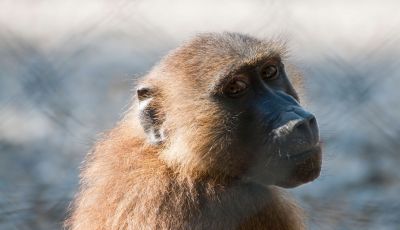Research teams
Cognition and social neuroscience
"Deepening the study of socially regulated cognition"
Perception and attention
"The perception of natural visual scenes and the recognition of familiar forms (letters, words, objects and handwriting)"
Developpement and cognitive agings
"Studying Development and Cognitive Aging"
Language
"To better understand the complex organization of language: its acquisition, its normal and pathological functioning, as well as its cerebral implementation"
Comparative cognition
"Better define the human cognitive processes through cognitions of other species"
Dernières publications
-
Analyzing gender bias in the non-verbal behaviors of generative systems2024
-
DeepWealth: A generalizable open-source deep learning framework using satellite images for well-being estimationSoftwareX2024
-
Reducing age differences in the retrieval of verbatim and gist representations: Encoding manipulationsMemory and Cognition2024
Partners
- Brain & Language Research Institute
- Institute of Language, Communication & the Brain
- Tremplin Carnot - Institut Cognition
News
-
 Prix Paoletti decerné à Adrien Meguerditchian
Prix Paoletti decerné à Adrien MeguerditchianCette année, le prix a été décerné par Catherine Jessus, directrice de l’INSB, à Leïla Perié et Adrien Meguerditchian. Deux jeunes talents dont les recherches portent sur l'immuno-hématologie et la psychologie cognitive (lien) Claude Paoletti, ancien directeur du département des sciences de la vie du CNRS, a pris de nombreuses initiatives pour soutenir les jeunes chercheurs. Ses amis ont créé un prix à sa mémoire et sa pérennité est assurée par l’Institut des sciences biologiques du CNRS.
-
 Interspecific behavioural synchronization
Interspecific behavioural synchronizationBehavioural synchronization is widespread among living beings, including humans. Pairs of humans synchronize their behaviour in various situations, such as walking together. Affiliation between dyadic partners is known to promote behavioral synchronization. Surprisingly, however, interspecific synchronization has recived little scientific investigation. Dogs are sensitive to human cues, and share strong affiliative bonds with their owners. We thus investigated whether, when allowed to move freely in an enclosed unfamiliar space, dogs synchronize their behaviour with that of their owners’.
-
 Cerebral Cortex: Left Brain Asymmetry of the Planum Temporale in a Nonhominid Primate: Redefining the Origin of Brain Specialization for Language
Cerebral Cortex: Left Brain Asymmetry of the Planum Temporale in a Nonhominid Primate: Redefining the Origin of Brain Specialization for LanguageThe planum temporale (PT) is a critical region of the language functional network in the human brain showing a striking size asymmetry toward the left hemisphere. Historically considered as a structural landmark of the left-brain specialization for language, a similar anatomical bias has been described in great apes but never in monkeys—indicating that this brain landmark might be unique to Hominidae evolution.
-
 Gaze-controlled vision enhancement system for reading in visually impaired people
Gaze-controlled vision enhancement system for reading in visually impaired peoplePeople with low vision, especially those with Central Field Loss (CFL), need magnification to read. The flexibility of Electronic Vision Enhancement Systems (EVES) offers several ways of magnifying text. Due to the restricted field of view of EVES, the need for magnification is conflicting with the need to navigate through text (panning). We have developed and implemented a real-time gaze-controlled system whose goal is to optimize the possibility of magnifying a portion of text while maintaining global viewing of the other portions of the text (condition 1).
-
 Eido, a new typeface for visually impaired patients
Eido, a new typeface for visually impaired patientsAge-related macular degeneration represents a population of more than one million patients in France. These patients mostly complain of a difficulty in correctly recognizing the words that make up a text. To try to improve the reading skills of these patients, three members of the "Perception et Caution" team (J.-B. Bernard, C. Aguilar, E. Castet E.) developed EIDO, a new Specially designed for visually impaired patients
-
 Boys underperforming in reading: it's in the head!
Boys underperforming in reading: it's in the head!On average, boys score far less on reading tests than girls. But the difference disappears when they are made to believe that it is a game.
-
 How to better evaluate student work?
How to better evaluate student work?Pascal Huguet and Isabelle Régner are currently running an alternative to the traditional scoring system in 70 secondary schools: the competency assessment. If the first results are promising, the experience is far from over.
-
 Evidence of a Vocalic Proto-System in the Baboon
Evidence of a Vocalic Proto-System in the BaboonLes babouins produisent des vocalisations comparables aux voyelles. C’est ce qu’ont mis en évidence des chercheurs du Gipsa-Lab (CNRS/Grenoble INP/Université de Grenoble Alpes), du Laboratoire de psychologie cognitive (CNRS/AMU) et du Laboratoire d’anatomie de l’Université de Montpellier grâce à des analyses acoustiques de vocalisations, couplées à une étude anatomique des muscles de la langue et à une modélisation des potentialités acoustiques du conduit vocal des singes.


